Kohler shower valve troubleshooting involves a few common issues. Such as too cold or hot water, too low or high water pressure, and dripping Showerhead. You may also experience continuous running water and no hot water in the Kohler shower.
To troubleshoot a Kohler shower mixing valve problem, check the water supply, ensure the valve is not blocked, and inspect for any leaks. Also, verify proper handle and temperature adjustments. If the issue still persists, consult a professional plumber.

You’ll learn how to identify and fix issues such as leaks, low water pressure, and temperature fluctuations. To prolong the lifespan of your Kohler shower valve, we’ll also provide useful maintenance tips.
Table of Contents
Possible Reasons For Kohler Shower Valve Problems [Quick Overview!]
Before heading to the details, have a short glimpse at the quick table below highlighting all the reasons for the Kohler shower valve problems with the effective solutions:
| Problem | Probable Reasons | Recommended Fix |
| Too cold water | Incorrect temperature settings Limescale build-up Faulty shower valve | Adjust the temperature settings on the shower valve and water heater. Flush out the shower valve to remove sediment accumulation. If needed, replace the bad valve. |
| Too Hot Water | Incorrect temperature setting in the shower valve and high-temperature setting on the water heater. Faulty anti-scald or thermostatic valve Mineral buildup. | Adjust the temperature dial both in the shower valve and water heater. Clean the dirt and sediment build-up in the shower valve. Replace the bad valve. |
| Water pressure is too low | Clogged shower headWater supply valve is partially closed. Wrong adjustment or faulty water pressure regulator. Blocked valve cartridge. | Open the water supply valve all the way. Clean out the stuck debris in the shower head. Adjust the water pressure regulator to the higher setting. Clean or replace the bad valve. |
| Too high water pressure | The faulty water pressure regulator Pressure reducing valve isn’t adjusted correctly. The Pressure relief valve in the water heater isn’t set properly. | Adjust the pressure-reducing valve on your Kohler shower. Adjust or replace the bad water pressure regulator. Set the water heater pressure relief valve correctly. |
| Kohler shower valve leaking | Worn-out mixing valve. Loose showerhead connection. Damaged O-rings or seals. High water pressure. | Secure the loose component on the showerhead. Replace the bad cartridge or entire valve assembly. Adjust the water pressure. |
| Non-stop Running Shower | High water pressure a faulty valve cartridge. Worn-out mixing valve. A loose or damaged washer. | Adjust the water pressure from the pressure regulator Secure the loosened shower handle Replace the bad washer, valve cartridge, or the entire shower valve assembly |
| Cold and hot reversed | Incorrect installation or a misalignment of the valve components. | Install the valve correctly. If required, replace the bad valve. |
| Kohler shower no water | The Water supply valve is partially closed. Blocked shower head. Blockages in the valve assembly. | Open the water supply valve all the way. Clean out the stuck grime and dirt from the showerhead Flush out the shower valve as well. |
Kohler Shower Valve Troubleshooting [A Complete Guide]
When troubleshooting a Kohler shower mixing valve problem, it is important to begin by identifying the specific issue. We’re here to help you with the best troubleshooting guide. So, you can identify and fix common shower valve issues by following our guidelines.
1. Kohler Shower Too Cold Water
If you’re experiencing consistently cold water in your Kohler shower, the best chances are you haven’t set the valve’s temperature setting correctly. If it is set too low, it is obvious you will get cold water.
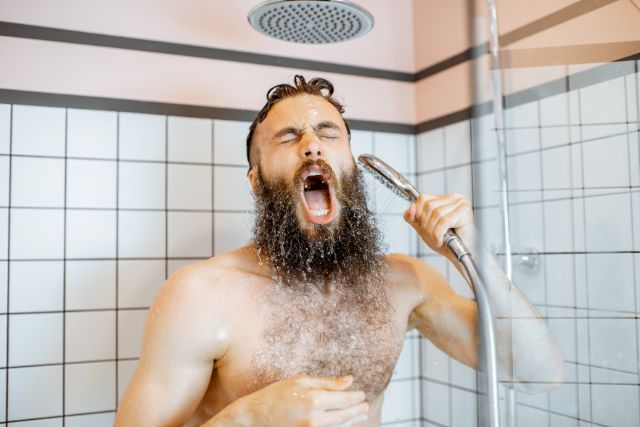
But despite the wrong adjustment of the temperature control, there could be several reasons for this issue. That includes:
- Limescale build-up in the mixing valve
- Faulty shower valve
- Or, improper temperature setting in the water heater
Besides, accumulated debris, minerals, or sediment in the plumbing lines or shower valves can also restrict the flow of hot water, causing colder water to dominate.
How To Fix:
In order to fix the issue, here are some suggestions you can try:
Step 1: Adjust The Temperature Setting On The Shower Valve
As for the first step, adjust the shower valve’s temperature setting. Set the temperature setting to a higher level.
To do so, just turn the valve clockwise to the fully open position to get adequate hot water.
Step 2: Inspect The Thermostat Mixing Valve
Next, inspect the thermostatic mixing valve for any blockages. If you suspect blockages or sediment buildup blocking the interior, just turn off the water supply. Then disassemble the valve cartridge and the showerhead.
In order to clean the elements.
- Prepare a mixture of vinegar and Soak the valve cartridge and any other affected parts in this solution.
- Leave the elements for at least an hour or overnight.
- Now take a soft brush or toothbrush and gently scrub away the loosened sediment from the components.
- Once done, use a gentle stream of water to flush out the remaining debris.
After cleaning, look for visible signs of damage in the shower valve.. If you notice any issues, be sure it is time to replace the bad valve.
For instance, we recommended contacting Kohler customer support or a professional plumber to replace the valve. They will be able to identify the correct replacement part and ensure it is installed correctly.
Step 3: Adjust The Water Heater
As with the above troubleshooting, check the temperature setting on your water heater. If the temperature is set too low, it can result in colder water throughout your plumbing system, including the shower.
Thus, adjust the water heater temperature setting to a higher temperature.
Typically around 120 to 140 degrees Fahrenheit (49 to 60 degrees Celsius), to ensure an adequate supply of hot water to your shower.
2. Kohler Shower Too Hot Water
It is a common phenomenon to the users that the Kohler shower starts providing excessively hot water. For instance, here are a couple of reasons to blame:
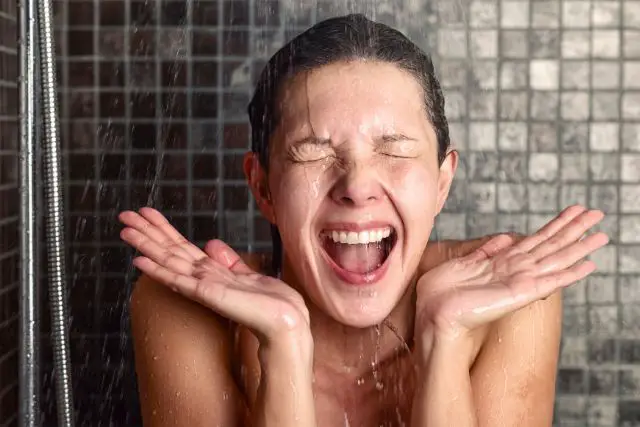
- Incorrect Temperature Setting: The first thing to check is the temperature setting on the shower mixing valve. If the handle or temperature control lever is set too high, it will result in water that is too hot.
- Malfunctioning Anti-scald Valve: Almost all modern shower systems including the Kohler shower valve come with anti-scald devices that are specially designed to balance the water temperature. In case, it starts malfunctioning, it is obvious you will get too hot water.
- Sediment accumulation: Shower mixing valve cartridges control the flow and temperature of hot and cold water. If the cartridge is blocked by sediment buildup, it may not effectively regulate the water temperature, leading to excessively hot water. Besides, sediment accumulation in the plumbing can also affect the mixing of hot and cold water.
- Faulty thermostatic valve: If your Kohler shower valve comes with a thermostatic valve, over time, it could also lead to this issue. The best chance is the valve is faulty or worn out, which allows water to become excessively hot.
How To Fix:
Start by inspecting the temperature setting on your Kohler shower valve. If it is set too high, adjust it to a lower temperature setting. This should allow for a more comfortable water temperature.
Besides if you have a water heater, don’t miss to check the temperature setting in it as well and adjust it to a safe level.
Inspect the shower valve for the lime scale or sediment accumulation. Flush out the valve with a descaling solution and if required replace the bad valve. Plus, verify your home’s water pressure regulator as well and adjust it correctly to ensure a balanced water pressure in the plumbing lines.
When done, turn on the water supply, and test the water temperature again. If the problem persists, inspect the plumbing line for sediment buildup.
If you are unable to address the affected lines, it is better to seek help from a licensed plumber. He will assess your plumbing system and help you to identify the source of the issue.
3. Kohler Shower Water Pressure Too Low
While using your Kohler shower, it is common for you may notice that the water pressure from the shower is too low. Certainly, it would be an unsatisfactory showering experience, thus identifying the exact reason responsible for this issue is a must.
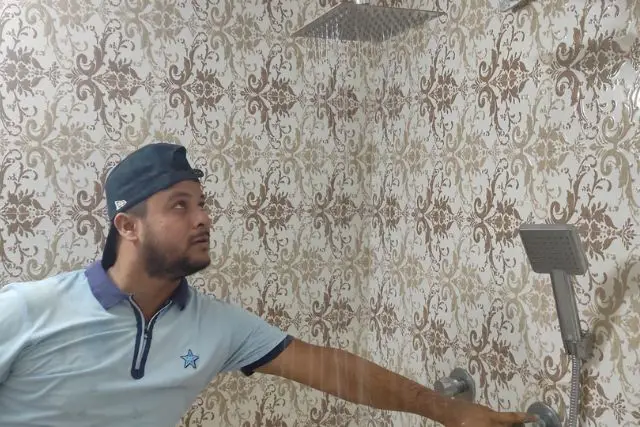
Well! From my hands-on experience of using HKohler shower for many years, here I’ve noted a few major factors for getting low water pressure:
Clogged Shower Head: Mineral deposits and sediment can accumulate in the showerhead over time. It reduces water pressure and obstructs the flow of water.
Partially Closed Water Supply Valves: If the water supply valves leading to your shower are not fully open, it can restrict the water flow. Consequently, water pressure is low.
Plumbing Blockages Or Restrictions: The build-up of mineral deposits, rust, or debris in the plumbing pipes can obstruct the water flow and cause low water pressure. This can be particularly common in older homes or if your plumbing system has not been properly maintained.
Pressure Regulator Issues: A pressure regulator can also lead to low water pressure throughout your plumbing system if it is not adjusted correctly,
Blocked valve cartridge: If the shower valve is blocked by mineral deposits or debris, it is obvious it will restrict the normal water flow. Besides malfunctions in the plumbing system like corroded pipes or leaks can also result in reduced water pressure.
How To Fix:
Go through the step-by-step suggestions below to ensure adequate water pressure from your Kohler shower:
Step #1: First up, inspect the shower head for any clogs. If you suspect a mineral deposit, disassemble the showerhead and soak it in a mixture of vinegar and water to dissolve the mineral deposits.
Take a small brush or toothbrush and scrub away any remaining debris. Then rinse the showerhead thoroughly and reattach it. If cleaning doesn’t improve the water pressure, consider replacing the showerhead with a new one designed to provide better flow.
Step #2: In the next step, locate the main water supply valve located near the shower or in the basement/utility room. Turn the valve counterclockwise to ensure they are fully open.
Step #3: As with the water supply valve, inspect the pressure regulator as well to ensure proper adjustment. Check for any visible signs of damage or leaks. If the pressure regulator is not functioning correctly, it may need to be repaired or replaced.
Step #4: If the problem persists, be sure the problem lies in the shower valve itself. Inspect the valve for any blockages. Clean it thoroughly or replace it if needed.
Step #5: If you suspect plumbing blockages, it’s best to contact a professional plumber to inspect your plumbing system. They can use specialized tools and techniques to identify and remove any blockages or restrictions in the pipes.
4. The Water Pressure Is Too High
As with the low water pressure, it is no deniable that you may encounter too high water pressure while in the shower. If it is not addressed at the right time, it may lead to several issues, such as excessive noise, leaks, or even damage to the shower valve.

Even a high water pressure can cause damage to your plumbing system and fixtures over time.
Let’s check out some reasons behind this problem:
- Faulty water pressure regulator
- Wrong adjustment of the pressure balancing valve
- Using a non-operational water flow restrictor
- Fault water supply valve
- Improper temperature and pressure relief valve in the water heater
How To Fix:
High water pressure can put stress on the shower valve, leading to leaks or other severe problems. Thus, without getting late, follow the corrective solution steps below to resolve the issue:
First off, inspect the water pressure regulator installed in your home’s main water supply line. Ensure it is in well working order and if needed, adjust the regulator to reduce the water pressure.
Also if there is a water flow restrictor in your shower head, verify it is working properly.
Then inspect the pressure-reducing valve (PRV) in your Kohler shower system to ensure that it is regulating the water pressure correctly. If needed, replace the bad valve.
When done, head to your water heater to ensure that the temperature and pressure relief valve are properly set and functioning. If not, adjust it according to the manufacturer’s instructions.
Sometimes, the municipal water supply itself can deliver water at a high pressure. Thus, we recommend contacting your local water utility provider to inquire about the water pressure levels in your area.
5. Dripping Or Leaking Shower Head
If you’re experiencing a dripping shower head in your Kohler shower, it can be annoying, wasteful, and may lead to water stains or damage.
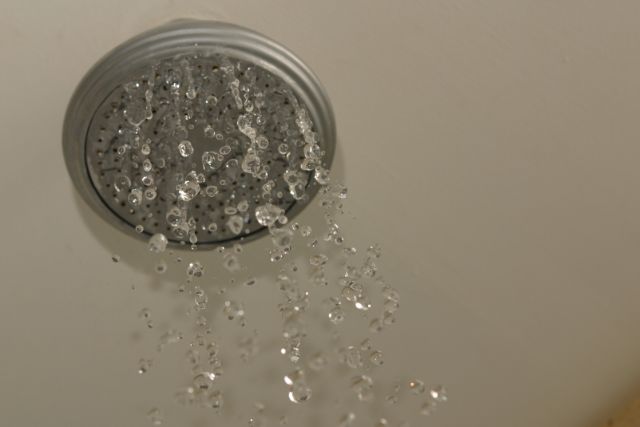
There are some causes which are responsible for this issue:
i) Worn-out Shower Mixing Cartridge:
The shower cartridge inside the mixing valve may be worn out or damaged. As a result, water continuously leaks and drips from the shower head.
ii) Loose Or Damaged Shower Head Connection:
A loose or damaged connection between the showerhead and the shower arm can cause water to leak and drip from the connection point.
iii) Mineral Deposits or Sediment Buildup:
Mineral deposits or sediment can accumulate inside the cartridge, obstructing the water flow and causing it to drip.
iv) High Water Pressure:
Excessively high water pressure can cause the showerhead to drip, as it exceeds the capacity of the valve or showerhead to regulate the flow.
v) Worn-out Seals and O-rings:
Deteriorated seals and O-rings inside the showerhead can also result in a constant drip. In general, O-rings are designed to prevent water from leaking around the valve stem. But in case it is damaged or worn out, it fails to provide the tight seal leading to leaks or drips.
How To Fix:
Below are some suggestions you can try to fix the dripping issue in your Kohler shower:
Fix 1: Inspect The Shower Head For Loose Components
First off, ensure the showerhead is securely attached to the shower arm. Use an adjustable wrench or pliers to tighten the connection if necessary. Be careful not to overtighten, as it can damage the threads.
If the showerhead or shower arm is damaged, consider replacing the affected part to create a proper seal. You may need to replace the shower head as a whole.
Fix 2: Replace The Bad Shower Cartridge
Inspect the shower valve for faulty cartridges or worn-out seals and O-rings. Replace the bad cartridge or the entire valve assembly if necessary. For instance, contact Kohler customer support or consult the product documentation to find the appropriate replacement parts.
Fix 3: Install A Pressure-reducing Valve (PRV)
If you suspect high water pressure causes your shower to leak, install a pressure-reducing valve (PRV) or consult a professional plumber to assess and adjust the water pressure in your plumbing system. Regulating the water pressure can help prevent leaks and drips from occurring.
6. Continuously Running Kohler Shower
We can realize how annoying it is that you are trying to turn off your shower but it’s non-stop running! As with the frustrating shower experience, the continuous running of your Kohler shower can result in higher water bills.
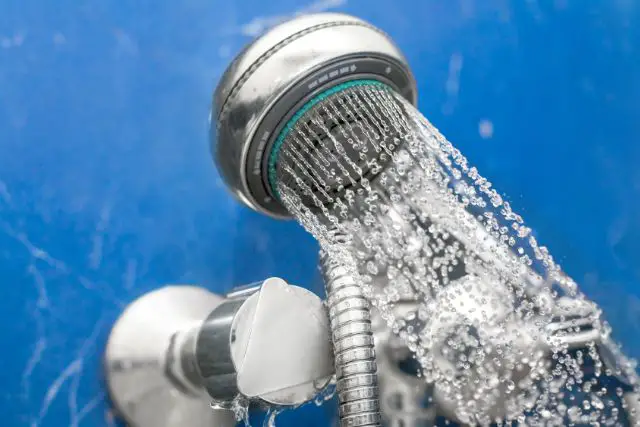
Thus it’s important to address a continuously running shower promptly to conserve water and avoid potential damage to your plumbing system.
The following are some possible reasons why your shower is continuously running:
- Damaged Shower Cartridge Or Valve
- Loose or damaged shower washer
- High water pressure
- Faulty shower handle
- Defective diverter valve
- Or malfunctioning thermostatic mixing valve
How To Fix:
Start by inspecting the shower assembly for any loose connection. Make sure the handle and other components are well-secured. Tighten any loose screws or connections. If the handle is damaged, it may need to be replaced.
Next, look for a loose or damaged washer and replace it if required. Now, inspect your plumbing system for any high water pressure. You can balance the water pressure by slightly closing the water valve or adjusting the water pressure regulator. For better, install a water flow restrictor in the water supply line.
If still the problem persists, be sure the problem lies in the shower valve inside. Inspect the shower valve and cartridge for any damage or deterioration.
In some cases, you may need to replace the entire valve assembly or just the cartridge. Please contact Kohler customer support or consult the product documentation.
7. Kohler Shower Mixing Valve Hot And Cold Reversed
If the hot and cold water are reversed on your Kohler shower mixing valve, it is likely due to incorrect installation or a misalignment of the valve components. If the cartridge is not properly aligned or if it’s damaged, it can lead to temperature reversal, causing the hot and cold water to mix in reverse.
Besides, If your Kohler shower has a thermostatic mixing valve or a temperature limiter, it also leads to this issue in case it’s not calibrated correctly. The mixing valve may require proper calibration to ensure the correct mixing of hot and cold water.
How To Fix:
Here are some more solutions you may find useful if you encounter hot and cold water revered issues with your Kohler shower:
First off, inspect the water supply line to check out the plumbing installation. Make sure that the cold water supply line is connected to the cold inlet of the mixing valve and the hot water supply line to the hot inlet behind the shower wall.
If the connections are reversed, you will need to switch them to ensure the proper flow of hot and cold water.
Next, inspect the shower valve for incorrect installation. For instance:
- Remove the handle and trim off the shower valve to access the cartridge or valve.
- Check for any misalignment or improper installation of the cartridge.
- If the cartridge is not properly seated or installed in the correct orientation, adjust it accordingly to ensure the hot and cold water inlets are aligned correctly.
If you have a thermostatic mixing valve, calibrate it correctly. You may consult the manufacturer’s instructions or contact Kohler customer support for guidance on calibrating the thermostatic mixing valve. They can provide specific instructions based on the model of your shower mixing valve.
8. Kohler Shower Only Hot Water
While using your Kohler shower, you may notice that the shower provides only hot water even after you are long trying to get water at a balanced temperature.
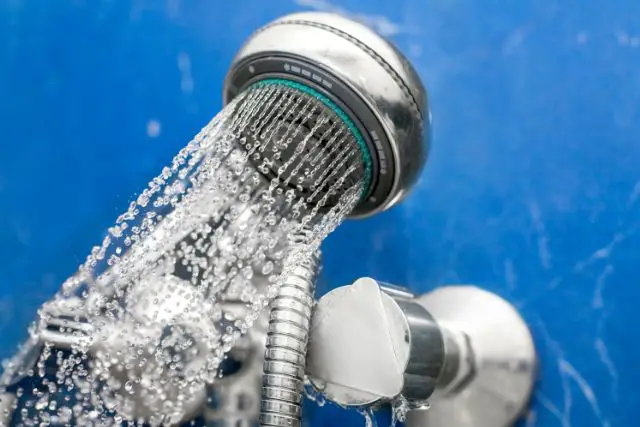
Well! There are several factors why you may get only hot water from Kohler shower mixing valves. Some common causes are listed below:
Temperature Limit Stop Misadjustment:
The temperature limit stop is a feature of many Kohler shower mixing valves that is designed to prevent scalding by limiting the maximum hot water temperature. If it is misadjusted, it can restrict the cold water flow and result in only hot water.
Cartridge Blockage:
Accumulated debris, sediment, or mineral deposits in the valve cartridge can obstruct the flow of cold water, leading to hot water only.
How To Fix:
Hopefully, these suggestions will help if you’re having trouble with these issues:
i) Fix The Temperature Issue:
Locate the temperature limit stop, usually located behind the handle or trim. Then adjust the temperature limit stop by turning it counterclockwise to allow for a higher cold water flow. Finally, test the shower to see if the cold water is now mixing properly with the hot water.
ii) Remove Blockage:
Turn off the water supply to the shower and Remove the handle and trim to access the valve cartridge. Take out the cartridge and inspect it for any blockages.
Clean the cartridge using a mild cleaning solution or vinegar and a soft brush. Rinse it thoroughly and reinstall it. Finally, reassemble the handle and trim, and test the water flow to see if both hot and cold water are now flowing properly.
9. Kohler Shower No Water
If you’re facing the issue of no water flowing from your Kohler shower mixing valve, there could be a few possible reasons for this problem.

i) Water Supply Issue:
If it’s partially closed or there is a problem with the water supply line, it can result in no water flow.
ii) Clogged Shower Valve:
Shower mixing valves can accumulate minerals, debris, and sediment over time, obstructing water flow.
iii) Blocked Shower Head Or Faucet Aerators :
Sediment and debris can clog the shower head or the plumbing pipes, that may restrict water flow.
iii) Plumbing System Issues:
In some cases, there may be underlying plumbing system problems, such as a pipe blockage or a malfunctioning pressure regulator.
How To Fix:
Follow the below few fixes to resolve the issue when you are struggling to get water from your Kohler shower:
Fix 1: Check The Water Supply
First off, check if there is an adequate water supply to your shower. Ensure that the main water supply valve is fully open. Verify the water pressure regulator of your water for any leaks or blockages. If needed, replace the bad regulator.
Fix 2: Clean The Shower Head & Water Pipes
Next, inspect the showerhead for any blockages. Remove the showerhead and clean it thoroughly to remove any mineral deposits or debris.
Additionally, check the shower pipe leading to the showerhead for any obstructions and clear them if necessary.
Fix 3: Unclog The Valve
Next, try cleaning the valve. Shut off the water supply, disassemble the valve, and carefully remove any debris or deposits. Reassemble the valve and test the water flow.
If you’ve ruled out the above causes and the issue persists, it is advisable to consult a professional plumber to assess and resolve any complex plumbing issues.
How To Replace Kohler Shower Mixing Valve?
When it comes to replacing your Kohler shower mixing valve, it’s essential to ensure a smooth and hassle-free process. With the right tools and a little know-how, you’ll be able to restore your shower to its optimal functionality and enjoy a rejuvenating bathing experience once again.
However, replacing a Kohler shower mixing valve can be done in several steps. Here’s a simplified guide to help you through the process:
Step 1: Locate the main water shut-off valve for your house and turn it off to stop the water flow to the shower.
Step 2: Take off the handle and trim by unscrewing or unfastening them. This will expose the valve assembly.
Step 3: Using pliers or an adjustable wrench, disconnect the water supply lines connected to the valve. Be prepared for some water to drain out, so have a bucket or towel ready.
Step 4: Unscrew or unthread the old valve from the shower plumbing. Take note of the orientation and position of the valve to ensure proper installation of the new one.
Step 5: Thread or screw the new Kohler shower mixing valve into place. Ensure it is securely tightened but be careful not to overtighten and damage the plumbing connections.
Step 6: Reconnect the water supply lines and tighten them securely. Reinstall the trim and handle. Turn on the water supply at the main shut-off valve and test the shower for proper functionality, checking for leaks and adjusting the temperature as needed.
Note: Remember, these steps provide a general overview, and the specific process may vary based on the model and design of your Kohler shower mixing valve. When in doubt or uncomfortable, consult the manufacturer’s instructions or hire a professional plumber.
FAQs:
What are the symptoms of a bad mixing valve?
Symptoms of a bad mixing valve may include inconsistent water temperature, poor water pressure, leaking around the valve, or no water flow at all.
How does a Kohler mixing valve work?
Kohler mixing valves work by combining hot and cold water to achieve the desired water temperature. They have internal mechanisms that regulate the flow and balance between the hot and cold water inputs.
What is the flow rate of the mixing valve?
The flow rate of a mixing valve can vary depending on the specific model and application. It is typically measured in gallons per minute (GPM) and can range from 1.5 GPM to 20 GPM or more.
How do you adjust valve pressure?
Valve pressure can be adjusted by using the valve’s built-in pressure adjustment mechanism. Also, it can involve turning a screw or knob to increase or decrease the pressure.
What is the maximum temperature for a mixing valve?
The maximum temperature for a mixing valve is typically set to prevent scalding. It is commonly set to a maximum temperature of around 120 to 140 degrees Fahrenheit (49 to 60 degrees Celsius).
Conclusion
Kohler shower valve troubleshooting is an essential skill for those who want to ensure their shower system functions optimally. Common issues such as a leaking valve, low water pressure, or temperature fluctuations can be easily resolved by following a few simple steps.
If the problem persists, it may be necessary to replace the valve or consult a professional plumber for further assistance. By taking a proactive approach to troubleshooting your Kohler shower valve, you can enjoy a refreshing and hassle-free shower experience.
Note: You can read the Moen shower valve troubleshooting guide.

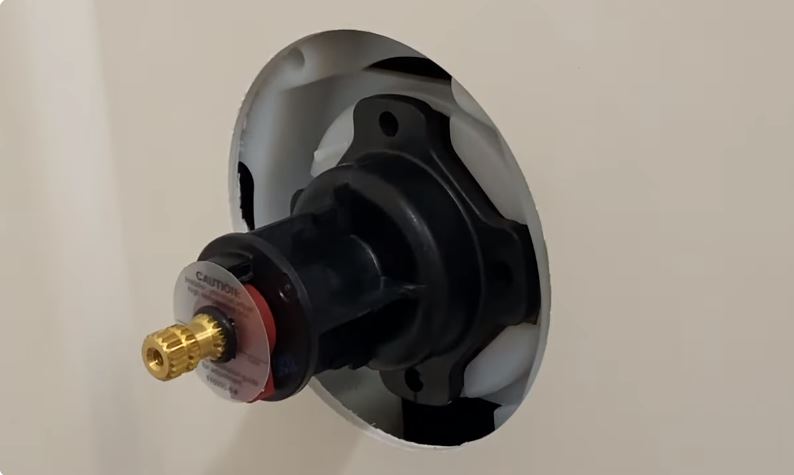
About Atikul
Atikul Islam shares his expertise with various tips & tricks to fix the problems with home appliances related to toilet, kitchen, bathroom, heating, & cooling systems. Read to know more about Atikul Islam.